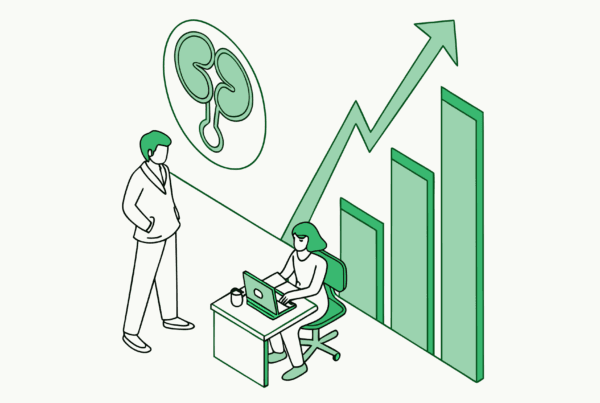Selling your clinic-based ABA therapy practice is one of the most significant financial and personal decisions you will make. For owners in the competitive San Francisco market, understanding the current landscape is not just helpful. It is critical. The process involves more than finding a buyer. It requires strategic preparation, a deep understanding of your practice’s value, and a clear vision for your future. This guide provides a direct look at what you need to know.
Curious about what your practice might be worth in today’s market?
Market Overview
The San Francisco Bay Area remains a highly desirable market for ABA therapy practices. The region’s strong economic fundamentals and high demand for services create a favorable environment for sellers. However, buyers here are sophisticated. They are not just acquiring a clinic. They are investing in a platform for growth.
A High-Demand Environment
The need for quality ABA services across the Peninsula, South Bay, San Francisco, and East Bay consistently outpaces the available supply. This fundamental demand creates a strong foundation for practice valuations. Buyers recognize the built in growth potential of a well-run clinic in this area.
Buyer Focus on Quality
Acquirers are looking for more than just revenue. They scrutinize practices for strong clinical leadership, consistent client outcomes, and a positive reputation in the community. The majority of ABA providers generate less than $5 million in annual revenue, so demonstrating operational excellence and a clear growth path is how you stand out.
Key Considerations
Before you even think about numbers, you must consider the structure of your exit. What do you want your role to be after the sale? Buyers often prefer the selling owner to stay for a transition period of one to two years to ensure continuity. If you plan to exit completely, you must carefully negotiate the terms of your non-compete agreement. Furthermore, finding a buyer whose culture aligns with yours is important for the future of your staff and the clients they serve. These are not minor details. They are foundational decisions that will shape the entire deal and your life after it.
Your legacy and staff deserve protection during the transition to new ownership.
Market Activity
The M&A market for ABA practices has seen some shifts. After a brief cooling period due to economic pressures in 2023, we saw renewed interest and several notable acquisitions in late 2024 and early 2025. This tells us that strategic buyers are actively seeking quality practices.
Here is what’s driving the current activity in the San Francisco market:
- Renewed Buyer Confidence. With market conditions stabilizing, private equity groups and larger strategic acquirers are once again competing for high quality ABA platforms.
- Strategic Acquisitions. We see buyers targeting practices that fill a geographic or service line gap in their portfolio. The recent acquisition of Bay ABA by Behavior Genius is a perfect example of a buyer expanding its footprint across the bay.
- A Focus on Operational Strength. Buyers are willing to pay a premium for practices with strong clinical structures, efficient billing systems, and stable, experienced staff.
The Sale Process
Selling a practice follows a structured path, but it is often filled with complexities that can derail a deal. The process generally begins with a comprehensive valuation to understand your practice’s fair market value. From there, your M&A advisor confidentially markets the practice to a curated list of qualified buyers. After initial discussions, you will negotiate and sign a Letter of Intent (LOI) with a preferred buyer. This triggers the most intensive phase: due diligence. This is a 4 to 6 week deep dive by the buyer into your financials, operations, and legal documents. It is where many deals encounter unexpected challenges. Proper preparation is key to a smooth closing.
The due diligence process is where many practice sales encounter unexpected challenges.
Valuation
What is your ABA practice actually worth? The answer starts with Adjusted EBITDA, not just the net income on your P&L statement. EBITDA stands for Earnings Before Interest, Taxes, Depreciation, and Amortization. We “adjust” it to add back owner-specific or one-time expenses to show the true cash flow of the business available to a new owner.
For example, we normalize for things like an above-market owner salary or personal expenses run through the business.
| Financial Item | Reported Figure | Adjustment | Adjusted Figure |
|---|---|---|---|
| Net Income | $600,000 | ||
| Owner Salary (Above Market) | $300,000 | +$150,000 | |
| One-Time Legal Fee | $25,000 | +$25,000 | |
| Adjusted EBITDA | $775,000 |
This Adjusted EBITDA is then multiplied by a market-based multiple, which can range from 3.0x to over 7.5x, depending on your practice’s size, payer mix, and growth profile.
Post-Sale Considerations
Your work is not finished once the sale documents are signed. The transition period is a critical phase that determines the long-term success of the acquisition. Your role during this time, whether as a clinical lead or a business development advisor, should be clearly defined in the sale agreement. This is also when non-compete clauses go into effect, limiting your ability to practice in a specific geographic area for a set period. Planning for these post-sale realities is just as important as negotiating the price. It ensures a smooth transition for your staff, continuity of care for your clients, and a successful launch into your next chapter.
The right exit approach depends on your personal and financial objectives.
Frequently Asked Questions
What makes the San Francisco Bay Area a favorable market for selling an ABA therapy practice?
The San Francisco Bay Area is highly desirable due to its strong economic fundamentals and a high demand for quality ABA therapy services that consistently outpaces supply, which creates a solid foundation for practice valuations.
What are buyers focusing on when purchasing an ABA therapy practice in San Francisco?
Buyers seek more than just revenue; they look for strong clinical leadership, consistent client outcomes, a positive community reputation, operational excellence, and a clear growth path to ensure long-term success.
What key considerations should sellers keep in mind before selling their ABA practice?
Sellers should consider their desired role post-sale, negotiate non-compete agreements carefully if planning to exit completely, and find a buyer whose culture aligns with theirs to protect staff and client interests during the transition.
How is the valuation of an ABA therapy practice in San Francisco determined?
Valuation starts with Adjusted EBITDA (Earnings Before Interest, Taxes, Depreciation, and Amortization), which adjusts net income for owner-specific or one-time expenses. This adjusted figure is multiplied by a market-based multiple, ranging from 3.0x to 7.5x, based on practice size, payer mix, and growth potential.
What should sellers expect during the sale process of their ABA therapy practice?
The process includes a comprehensive valuation, confidential marketing to qualified buyers, negotiation and signing of a Letter of Intent, followed by a 4 to 6 week due diligence phase. Sellers need to prepare thoroughly to avoid challenges and ensure smooth closing and transition periods.


